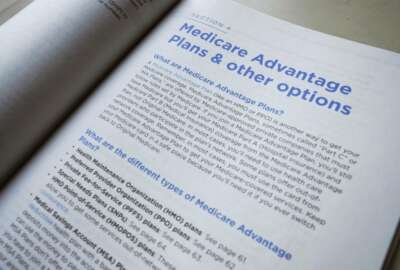
How to beat higher 2020 health premiums
Active and retired federal-postal workers, and their survivors have some of the best health insurance in the nation.
Active and retired federal-postal workers, and their survivors have some of the best health insurance in the nation.
Most are eligible for 20 or more plans or options ranging from nationwide plans to local health maintenance organizations. Nobody can be rejected because of age, health or previous conditions. And if you hit the limit in one you can switch to another.
Oh, and Uncle Sam pays an average of 72%-75% of the total premium. That amount is fixed so that even if premiums go up next year, which they will, the government share will be the same.
Experts like Walton Francis, of Consumers’ Checkbook’s “Guide to Health Plans for Federal Employees,” say individuals and families can save $1,000-$2,000 in premiums next year simply by shopping around, moving to a less expensive plan with similar coverage but lower premiums. Or, if they are Medicare-eligible, there is another option: They can suspend but not drop their 2020 Federal Employees Health Benefits Program plan, enroll in a Medicare Advantage plan and pay for Medicare Part B. It works for a lot of people and it is something to consider now, before the confusion of the 2020 health insurance open season begins in September.
Related Stories
Federal workers don’t know if they will be getting a pay raise in 2020. The president and the House have OK’d a January raise — the president 2.6% and the House 3.1% — but the Senate is yet to be heard from. The health insurance open season this year runs from Nov. 11 to Dec. 9. The pay raise issue may not be settled by then, but your premiums will go up regardless.
Federal retirees are likely to get some kind of cost of living adjustment. But the COLA countdown is still underway. The government will check on the rise, if any, in the consumer price index from the current third quarter (July, August and September) over Q3 2018. Then in October, it will announce how much, if anything, federal, military and social security retirees will get in their January cost of living adjustment.
What both groups, workers and retirees know for sure is that most premiums are going up, some maybe by double-digits. In some cases higher premiums will eat into, if not devour, the worker pay raise or the to-be-determined retiree cost of living adjustment. That means people will have to downsize to a less costly plan — not always a bad idea — or consider another sobering option: suspending FEHBP coverage. If you suspend, you can always resume coverage the following year. If you cancel, you are out forever.
According to the Consumers’ Checkbook, a third of all federal retirees now belong to a Medicare advantage plan. They pay only its lower premium and Medicare Part B. The savings from suspending their FEHBP plan can be substantial and the coverage excellent.
Finding the best buys among 20 to 30 plans with a wide variety of premiums and benefits isn’t easy, especially for retirees who tend to stay in the same plan year after year despite changes in benefits and premiums. Retirees and their survivors often have less money and more medical problems than younger, working feds.
Last year, Consumer’s Checkbook said, medical expenses for young children typically average about $2,000 per year. Those folks younger than 55 years old run about $6,000, and those 65 years and older average $12,000. Because of their special age-related needs, retirees and their survivors have to decide whether to buy Medicare Part B as part of their federal health program.
Last year, Consumer’s Checkbook said that annuitants with Medicare Parts A and B could save a lot of money in 2019 premiums if they “suspend (not drop) their FEHBP enrollment, join a Medicare Advantage plan, and pay only the Medicare premium.” Checkbook says they can “re-enroll in an FEHBP in the future without penalty, and in the meantime enjoy good catastrophic protection, have low copays and save thousands in premium costs.”
About one in three retirees belong to a Medicare Advantage plan, according to Consumers’ Checkbook. Under the “suspend” option, you pay only the Part B premium and sometimes an extra premium charge — usually only a few hundred dollars per year and often nothing at all — that the Medicare Advantage plan charges Medicare participants for additional benefits, such as prescriptions drug coverage.
You can later switch out of Medicare Advantage and rejoin the FEHBP as if you had never left during any future open season. This works equally well for a couple when both spouses are enrolled in Medicare, or if they are willing to pursue separate health insurance options. If you choose to “suspend” but not drop FEHBP coverage, Checkbook says there were four good options for the 2019 open season. Those options could change again for upcoming 2020 open season, but here are the suggestions it made for 2019 coverage:
- Enroll in one of the better Medicare Advantage plans and suspend FEHBP enrollment. This takes into account dollar costs only.
- Enroll in the Aetna Direct CDHP plan or the Blue Cross Basic plan. Your special account will pay toward the Medicare Part B premium or, in the Aetna Direct plan, for drug or dental costs not otherwise covered. And you also get a Medicare wraparound — several Kaiser plans around the nation (excluding Kaiser DC) will pay almost the entire Part B premium. These plans provide only a partial wraparound, however.
- Enroll in an FEHBP plan with rich benefits, such as APWU, NALC, Kaiser or many other HMOs and drop Medicare Part B.
- Enroll in a low-premium national plan such as the GEHA standard option along with Part B and get a Medicare wraparound benefit, or join a low-premium HMO and use Part B to fill holes and get services outside the plan’s network.
Two of the options permit keeping both Part B and FEHB enrollment, but two “let you pay only one premium. All of them vary in details that you can only assess after studying the procure of one or two plans.”
Checkbook says that most of the options provide most annuitants substantial savings. It is complicated but important stuff. Maybe getting a head start, before the November open season, will help you make the right choice? During the open season itself, we’ll have a series of columns and radio shows with insurance expert Walton Francis. He’ll talk about best buys for people of all ages, and financial and medical situations. Until then, consider your options.
Nearly Useless Factoid
By Amelia Brust
A new pop up cafe in Tokyo’s Shin Okubo district, called “2D Cafe,” is meant to look like a cartoon come to life. Its monochrome decor with white floors, walls, furniture and other small details are designed with black sketchg lines, like one is inside the pages of a coloring book. The wall decor is also drawn on.
Source: Bored Panda
Copyright © 2025 Federal News Network. All rights reserved. This website is not intended for users located within the European Economic Area.
Mike Causey is senior correspondent for Federal News Network and writes his daily Federal Report column on federal employees’ pay, benefits and retirement.
Follow @mcauseyWFED





